-
 Bitcoin
Bitcoin $117800
-0.93% -
 Ethereum
Ethereum $3595
-3.74% -
 XRP
XRP $3.255
-7.56% -
 Tether USDt
Tether USDt $1.000
0.00% -
 BNB
BNB $769.8
-0.05% -
 Solana
Solana $190.0
-6.65% -
 USDC
USDC $0.9999
0.01% -
 Dogecoin
Dogecoin $0.2449
-8.56% -
 TRON
TRON $0.3107
-1.02% -
 Cardano
Cardano $0.8207
-7.05% -
 Hyperliquid
Hyperliquid $42.90
-3.57% -
 Stellar
Stellar $0.4320
-7.31% -
 Sui
Sui $3.746
-4.91% -
 Chainlink
Chainlink $18.13
-6.70% -
 Hedera
Hedera $0.2495
-8.65% -
 Bitcoin Cash
Bitcoin Cash $510.6
-2.01% -
 Avalanche
Avalanche $23.94
-3.95% -
 Litecoin
Litecoin $113.6
-2.15% -
 Shiba Inu
Shiba Inu $0.00001405
-7.72% -
 UNUS SED LEO
UNUS SED LEO $8.967
-0.02% -
 Toncoin
Toncoin $3.165
-9.97% -
 Polkadot
Polkadot $4.180
-5.51% -
 Ethena USDe
Ethena USDe $1.001
-0.01% -
 Uniswap
Uniswap $10.07
-4.95% -
 Monero
Monero $320.9
-1.30% -
 Pepe
Pepe $0.00001299
-6.17% -
 Bitget Token
Bitget Token $4.648
-3.05% -
 Dai
Dai $0.9999
0.01% -
 Aave
Aave $290.4
-5.24% -
 Bittensor
Bittensor $432.1
-3.82%
What is the difference between blockchain and a traditional database?
Blockchain and traditional databases differ in decentralization, data structure, control, and use cases, with blockchain offering immutability and transparency, while traditional databases prioritize performance and centralized management.
Jul 23, 2025 at 04:49 pm

Understanding the Core Differences
When exploring the difference between blockchain and a traditional database, it's essential to start by defining both systems. A traditional database is a centralized system where data is stored and managed by a single authority. This authority has full control over the data, including the ability to modify or delete it. In contrast, blockchain is a decentralized ledger technology where data is stored across a network of computers, and no single entity has exclusive control.
The decentralization aspect of blockchain ensures that data is distributed and replicated across multiple nodes. This means that if one node fails, the data remains intact on other nodes. Traditional databases, being centralized, are more vulnerable to single points of failure, which can lead to data loss or corruption if the central server encounters issues.
Data Structure and Storage
One of the most notable differences in data structure lies in how information is stored. Traditional databases typically use tables to store data in rows and columns, allowing for efficient querying and indexing. These databases are optimized for fast read and write operations, making them suitable for applications that require high performance and scalability.
On the other hand, blockchain uses a chain-like structure where each block contains a batch of transactions. These blocks are linked together using cryptographic hashes, forming a secure and immutable chain. Once a block is added to the blockchain, altering it becomes nearly impossible without altering all subsequent blocks, which requires consensus from the majority of the network.
This immutability of blockchain makes it highly secure and tamper-resistant, a feature that traditional databases lack. While traditional databases allow for easy modifications, blockchain ensures that once data is recorded, it cannot be changed without network-wide agreement.
Control and Access Permissions
In a traditional database, access control is managed by the administrator or the organization that owns the database. They can grant or revoke permissions to users, allowing them to read, write, or modify data. This centralized control makes it easier to manage user access but also introduces risks related to data manipulation or unauthorized access.
In contrast, blockchain operates on a permissionless or permissioned model. Public blockchains, such as Bitcoin or Ethereum, are permissionless, meaning anyone can join the network, validate transactions, and access the data. Private or consortium blockchains may have restricted access, but even in these cases, the control is distributed among multiple parties rather than being centralized.
The transparency of blockchain allows all participants to view the data, though privacy can be maintained through cryptographic techniques. This level of transparency fosters trust among users, as all transactions are visible and verifiable by anyone on the network.
Data Modification and Immutability
One of the key features of traditional databases is their ability to update or delete records. This flexibility is crucial for applications where data changes frequently, such as banking systems or inventory management. However, this also means that data can be altered without leaving a trace, which can be a concern for auditability and trust.
Blockchain, however, is designed for immutability. Once data is recorded on the blockchain, it cannot be changed without the consensus of the network. If an error is found in a transaction, a new transaction must be added to correct it, which is then permanently recorded. This feature makes blockchain ideal for applications requiring a permanent and tamper-proof record, such as supply chain tracking or legal contracts.
The consensus mechanisms in blockchain, such as Proof of Work or Proof of Stake, ensure that all nodes agree on the validity of transactions before they are added to the chain. This process prevents fraudulent activities and ensures the integrity of the data.
Use Cases and Applicability
When considering the use cases of traditional databases, it becomes clear that they are well-suited for applications that require fast data retrieval, frequent updates, and high transaction throughput. Examples include customer relationship management (CRM) systems, e-commerce platforms, and real-time analytics.
On the other hand, blockchain excels in scenarios where trust, transparency, and security are paramount. It is widely used in cryptocurrency systems, smart contracts, supply chain management, and decentralized finance (DeFi). These applications benefit from blockchain’s ability to provide a transparent and unchangeable record of transactions.
While traditional databases are more efficient for certain tasks, blockchain offers unique advantages in environments where decentralization and trust are critical. The choice between the two depends on the specific requirements of the application, including factors such as data integrity, access control, and transaction speed.
- Traditional databases are ideal for centralized applications requiring high performance and frequent data modifications.
- Blockchain is better suited for decentralized systems where immutability and transparency are essential.
- Hybrid models are emerging, combining the speed of traditional databases with the security of blockchain for specific use cases.
Frequently Asked Questions
Q: Can blockchain replace traditional databases entirely?
A: While blockchain offers unique advantages, it is not a direct replacement for traditional databases in all scenarios. Traditional databases are more efficient for high-speed transactions and dynamic data updates, making them indispensable in many applications.
Q: Is blockchain more secure than a traditional database?
A: Blockchain provides a higher level of security due to its decentralized and immutable nature. However, traditional databases can also be secure with proper encryption, access controls, and regular audits.
Q: How does blockchain handle scalability compared to traditional databases?
A: Traditional databases generally offer better scalability for high-volume transactions. Blockchain networks, especially public ones, often face scalability challenges due to consensus mechanisms and block confirmation times.
Q: Are there any hybrid systems combining blockchain and traditional databases?
A: Yes, some systems integrate blockchain with traditional databases to leverage the strengths of both. For example, a blockchain might be used for audit trails while a traditional database handles real-time data processing.
Disclaimer:info@kdj.com
The information provided is not trading advice. kdj.com does not assume any responsibility for any investments made based on the information provided in this article. Cryptocurrencies are highly volatile and it is highly recommended that you invest with caution after thorough research!
If you believe that the content used on this website infringes your copyright, please contact us immediately (info@kdj.com) and we will delete it promptly.
- H100 Group's Bitcoin Bet: A Bold Move into Cryptocurrency's Future
- 2025-07-24 00:30:13
- EFSANE: Pioneering the Future of the Crypto Ecosystem as an Investment Platform
- 2025-07-24 00:30:13
- Pepe Dollar, Bitcoin Whales, and the BTC Rally: A New Era of Crypto Fortunes?
- 2025-07-24 01:10:13
- Sui Price, Open Interest, and the $4 Breakout: Will SUI Surge?
- 2025-07-23 22:50:13
- BlockDAG, XRP, and DOT: Riding the Crypto Wave Like a Wall Street Pro
- 2025-07-23 23:10:13
- Dogecoin, Hedera, and PayFi: Altcoins Heating Up in 2025
- 2025-07-23 23:50:12
Related knowledge
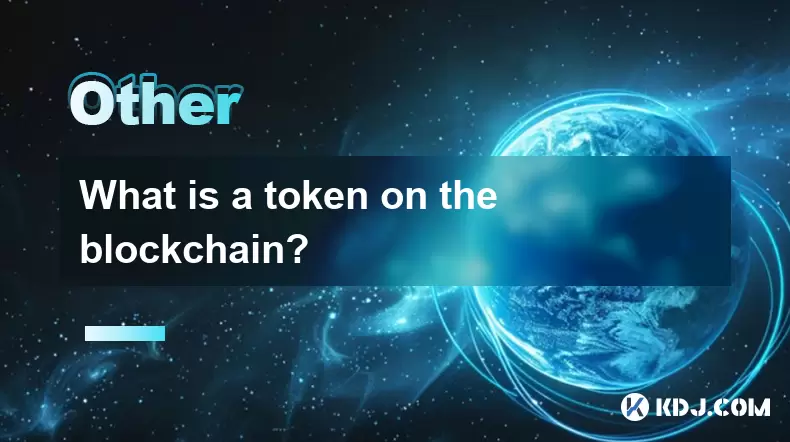
What is a token on the blockchain?
Jul 21,2025 at 07:00am
Understanding the Concept of a TokenIn the realm of blockchain technology, a token is a digital representation of an asset or utility that exists on a...
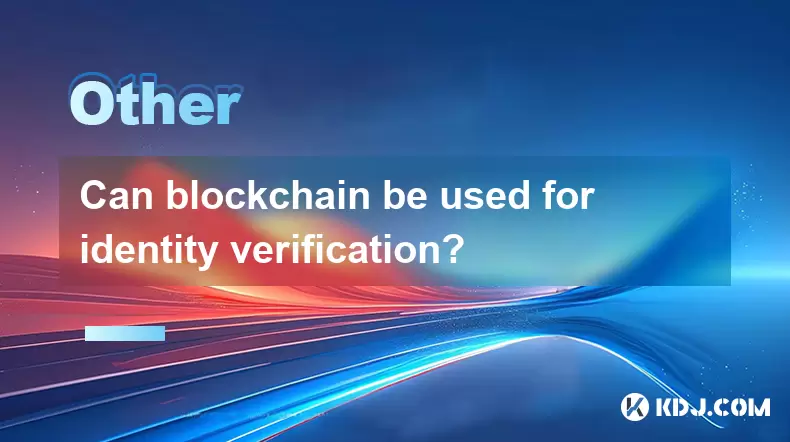
Can blockchain be used for identity verification?
Jul 18,2025 at 02:14pm
Understanding Identity Verification in the Digital AgeIn the modern digital landscape, identity verification has become a critical component for ensur...
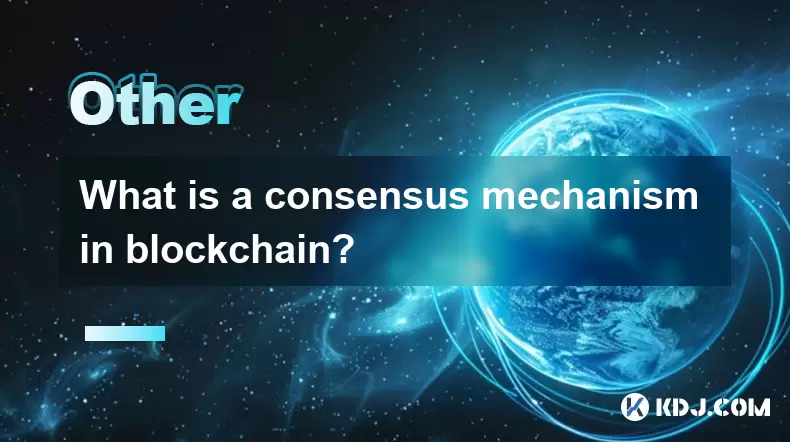
What is a consensus mechanism in blockchain?
Jul 21,2025 at 03:01am
Understanding the Basics of Consensus MechanismsA consensus mechanism is a critical component of any blockchain network. It refers to the process by w...
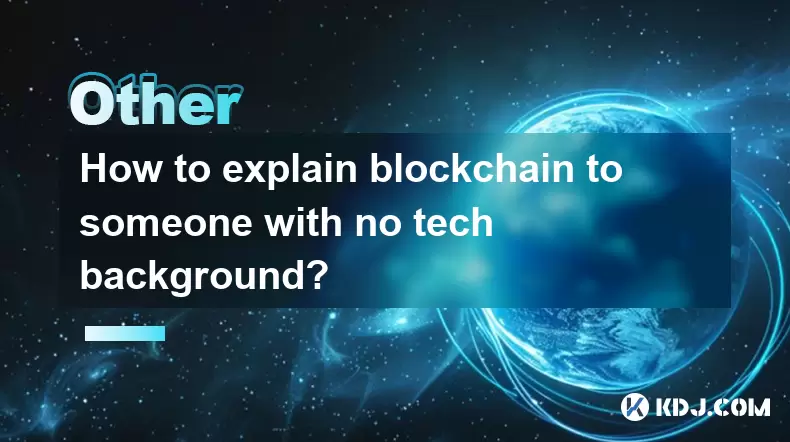
How to explain blockchain to someone with no tech background?
Jul 18,2025 at 11:08pm
Understanding the Basics of BlockchainTo explain blockchain to someone with no tech background, it's essential to start with simple analogies and avoi...

Who invented blockchain technology?
Jul 23,2025 at 01:28am
Origins of Blockchain TechnologyBlockchain technology did not emerge from a single inventor or institution. Instead, it evolved through a series of ac...
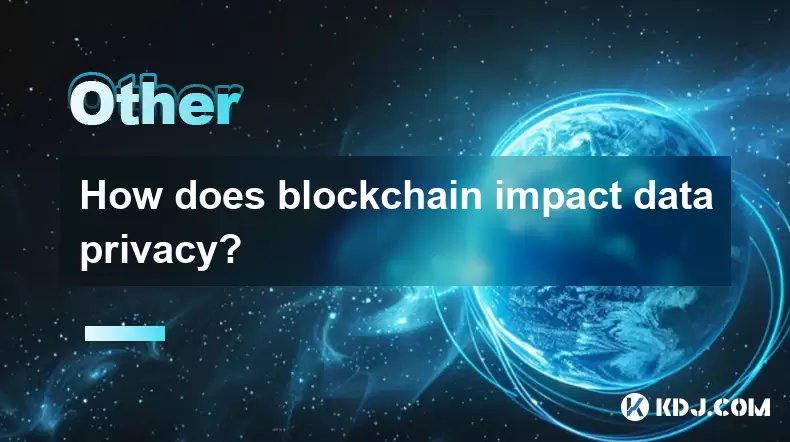
How does blockchain impact data privacy?
Jul 21,2025 at 02:21pm
Understanding the Role of Blockchain in Data PrivacyBlockchain technology, originally developed as the underlying infrastructure for cryptocurrencies ...

What is a token on the blockchain?
Jul 21,2025 at 07:00am
Understanding the Concept of a TokenIn the realm of blockchain technology, a token is a digital representation of an asset or utility that exists on a...

Can blockchain be used for identity verification?
Jul 18,2025 at 02:14pm
Understanding Identity Verification in the Digital AgeIn the modern digital landscape, identity verification has become a critical component for ensur...

What is a consensus mechanism in blockchain?
Jul 21,2025 at 03:01am
Understanding the Basics of Consensus MechanismsA consensus mechanism is a critical component of any blockchain network. It refers to the process by w...

How to explain blockchain to someone with no tech background?
Jul 18,2025 at 11:08pm
Understanding the Basics of BlockchainTo explain blockchain to someone with no tech background, it's essential to start with simple analogies and avoi...

Who invented blockchain technology?
Jul 23,2025 at 01:28am
Origins of Blockchain TechnologyBlockchain technology did not emerge from a single inventor or institution. Instead, it evolved through a series of ac...

How does blockchain impact data privacy?
Jul 21,2025 at 02:21pm
Understanding the Role of Blockchain in Data PrivacyBlockchain technology, originally developed as the underlying infrastructure for cryptocurrencies ...
See all articles

























































































